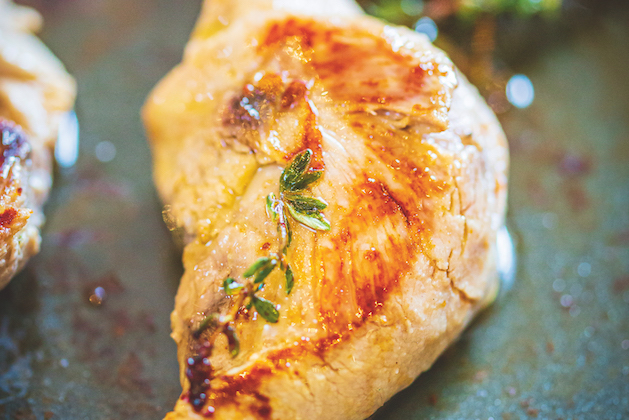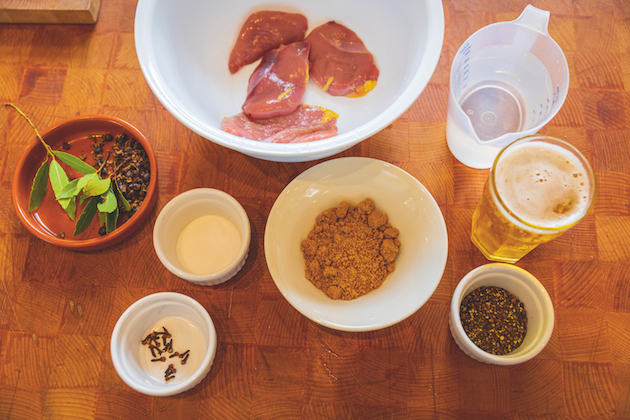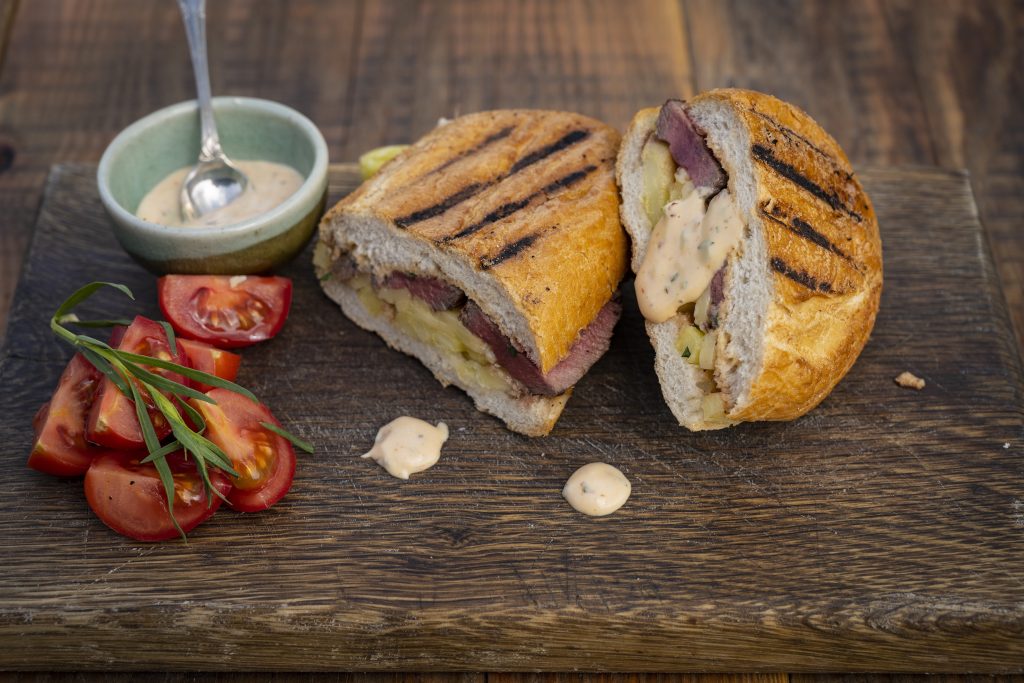Win CENS ProFlex DX5 earplugs worth £1,149 – enter here
Recipe for cider brined pheasant
 Cider Brined Pheasant - Steven Lamb - pan frying the pheasant breasts - possible finished recipe.
Cider Brined Pheasant - Steven Lamb - pan frying the pheasant breasts - possible finished recipe.
One of the few criticisms thrown at game meat is that it can sometimes have the propensity to go dry after cooking. This is especially true of pheasant if it isn’t handled with a bit of care and sensitivity. Even with the buttery yellow fat on the breast of a mature bird, the meat can still dry out, but brining is quite literally the solution to this issue.
A brine, or wet cure, is a saline liquid that has been flavoured. It is a bit like a marinade, but has more curing qualities than that. When the meat is fully submerged in the brine, the salt in the liquid draws out the moisture via a process of osmosis. The muscle filaments in the meat then start to relax due to the added tenderising properties of the alcohol, which allows the brine to be deposited in those tiny gaps and get trapped within.
This means that when the pheasant is cooked it is moist and pliable, with the bonus of having all the extra flavours of the brine added to it. The only thing to be mindful about is how much salt to use in the brine — not enough and you are only seasoning but too much results in unbearably salty pheasant. So the minimum you need is 3% salt to the body of liquid or the equivalent of 30g of salt to one litre of liquid. The maximum I use is 10%, but this is only if I am short of time and trying to get the brine to work quickly.
You can only leave the pheasant in a 10% brine for a couple of hours before it starts to be too salty. I prefer to be better organised and make a 3% brine, so that the pheasant can be wet cured overnight.
The brine is only the halfway stage. Everything that is wet-cured needs to be cooked to finish it off.

Ingredients for cider brined pheasant
Recipe for cider brined pheasant
Ingredients
- 4 pheasant breasts
- 60g salt (3% salt to the volume of liquid)
- 1 litre water
- 1 litre strong dry cider (still or sparkling)
- 100g demerara sugar
- 20 crushed dried juniper berries
- 10g crushed black peppercorns
- 10 torn fresh bay leaves
- 5 cloves
Method
- Put all the brine ingredients together in a non-aluminium bowl or tub and stir to dissolve the sugar and salt. Aluminium has a tendency to taint the flavour of the brine with a slight metallic tang. If you were making a larger quantity of brine, then it would need a larger amount of salt and sugar, which often requires heating the liquid slightly in order to dissolve the salt and sugar. Of course, you must allow the brine to cool fully before adding any fresh meat to it.
- Place your pheasant breasts in the brine and submerge completely. Leave them in the brine in the fridge for six to eight hours.
- After the allotted time, remove the pheasant from the brine and pat dry with a clean tea towel. Heat the oven to 180°C and place the pheasant on a roasting tray. Roast the meat as you would normally for 10 to 12 minutes or until the internal temperature, measured using a digital thermometer, reaches 60°C. Remove from the heat and rest for 10 minutes.
- The cider brined pheasant will be a revelation and you will want to start experimenting on almost any other game meat. The beauty of a minimum percentage salinity brine is that you can keep the meat in there until you are ready to use it. It will never get too salty and the meat will be more tender and moist the longer you leave it in. Think of the brine as a hybrid between the keeping properties of a fridge and the flavouring and tenderising properties of an oven.
- Once the brine has done its job, I discard it. Even if it could possibly have enough strength to take more pheasant breast, I don’t want to take the risk. I certainly don’t have a brine that contains anything other than a single ingredient. Different meats take variable times to be brined and you don’t want to cross-contaminate a brine, which ultimately is drawing out the moisture from the fresh meat before replacing it with flavour.
- Brining is one of those secret, slightly cheffy tricks that will have everyone wondering how you managed to create such deliciousness. It is particularly satisfying when you have a pheasant doubter to dinner.
Related Articles
Get the latest news delivered direct to your door
Subscribe to Shooting Times & Country
Discover the ultimate companion for field sports enthusiasts with Shooting Times & Country Magazine, the UK’s leading weekly publication that has been at the forefront of shooting culture since 1882. Subscribers gain access to expert tips, comprehensive gear reviews, seasonal advice and a vibrant community of like-minded shooters.
Save on shop price when you subscribe with weekly issues featuring in-depth articles on gundog training, exclusive member offers and access to the digital back issue library. A Shooting Times & Country subscription is more than a magazine, don’t just read about the countryside; immerse yourself in its most authoritative and engaging publication.







